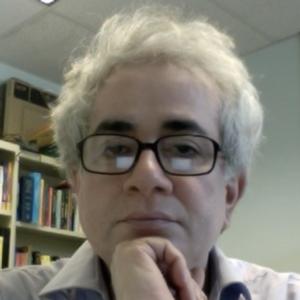Office: Scott Bioengineering Building 338
Phone: (970) 491-5175
Website: https://www.engr.colostate.edu/~ashokp/index.htm
Curriculum Vitae: https://www.engr.colostate.edu/cbe/wp-content/uploads/2019/03/Ashok-PrasadCV_Jan19.pdf
Google Scholar: https://scholar.google.co.in/citations?user=-LTVKKkAAAAJ&hl=en
Education
- BSc (Physics) 1985 St. Stephens College, Delhi University
- MA Economics 1987 Delhi School of Economics, Delhi University
- PhD Physics 2006 Brandeis University, Massachusetts
About
Dr. Prasad did his Ph.D. in theoretical soft condensed matter physics from Brandeis University, Waltham, Mass. in 2006. During his PhD he became interested in the interface between biology and the physical and engineering sciences. For his postdoctoral work he moved to a computational immunology laboratory in the department of Chemical Engineering at MIT. At MIT Dr Prasad worked on building computational models for understanding T cell behavior and development. Prior to his PhD in physics, Dr Prasad was a lecturer in economics in a college of the University of Delhi, India. He joined the faculty of Colorado State University in January 2009.
The Prasad group works on several projects at the interface of the physical sciences and engineering with biology, using mathematical and computational methods as well as experiments.
Research areas of interest include cellular biomechanics and the determination of cell shape, the theoretical properties of signaling and gene transcription networks, synthetic biology, systems biology of plants, identification of network aberrations in cancer using machine learning, and genome scale metabolic modeling. The group has developed methods for quantitative image analysis to help identify cancer cell phenotypes based on morphological analysis, and are currently working to extend these methods more generally. They work on techniques for measuring the physical parameters of the cellular cytoskeleton using microrheology, and relating them to cellular phenotype, motility and cytoskeletal properties. In synthetic biology they have been developing some of the first synthetic genetic circuits in plants, in collaboration with plant synthetic biologists at CSU. In cancer network analysis, they, along with collaborators in the College of Veterinary Sciences, are using machine learning methods to help uncover the signatures of drug sensitivity of cancers. In plant systems biology, they are attempting to model hormone signaling in plants and to understand the basis of epigenetic memory, along with plant biologists at CSU. They also work on modeling p53, Reactive Oxygen Species (ROS) and mitochondrial dynamics in human cells. In the field of genome scale metabolic modeling, they have recently reconstructed a metabolic model of the photosynthetic cyanobacterium, Synechocystis, and are trying to adapt these models for simulating dynamic changes due to the normal diurnal cycle of photosynthetic microorganisms. They are also very interested in using the tools of mathematical modeling and simulation to ask basic questions about signaling and gene transcription networks in cells, and collaborate closely with many experimental groups across campus, and at other universities.

